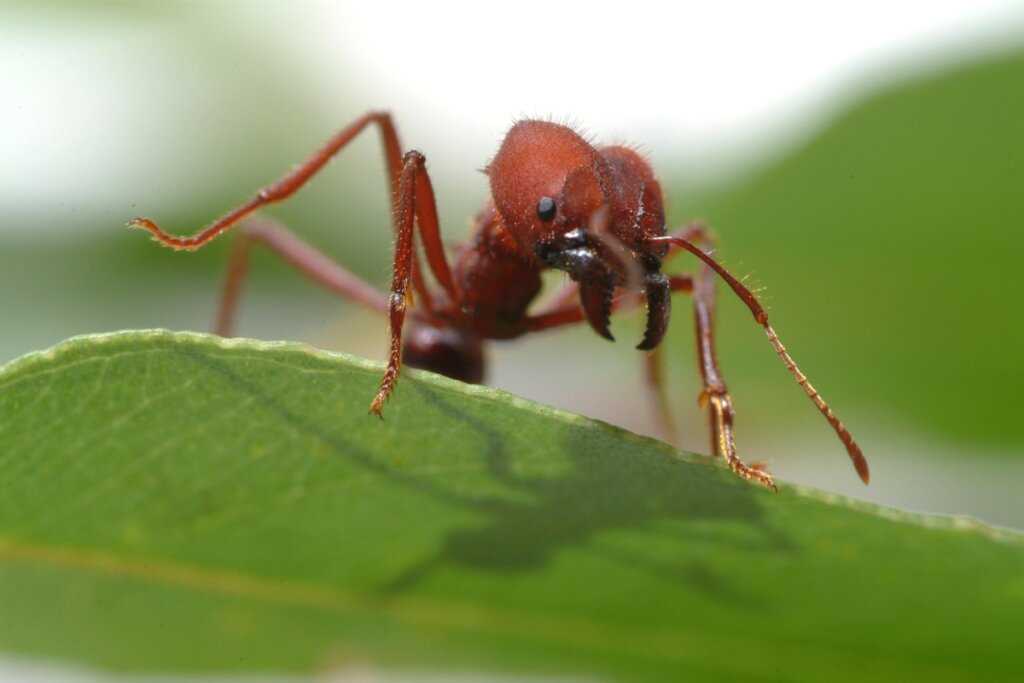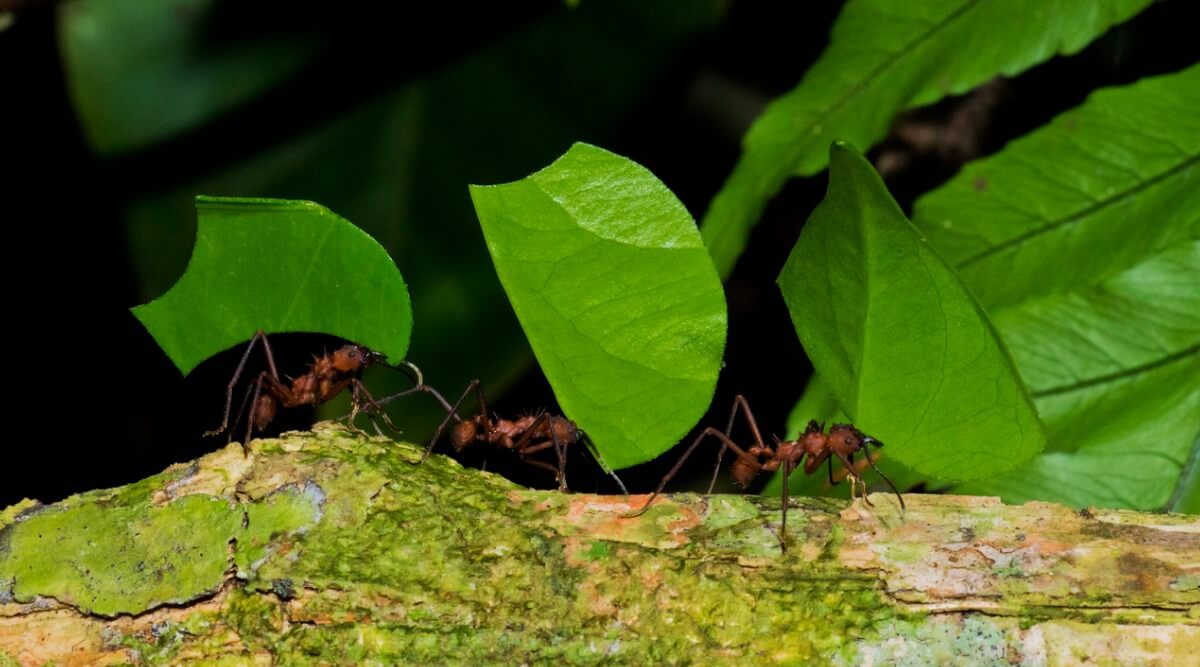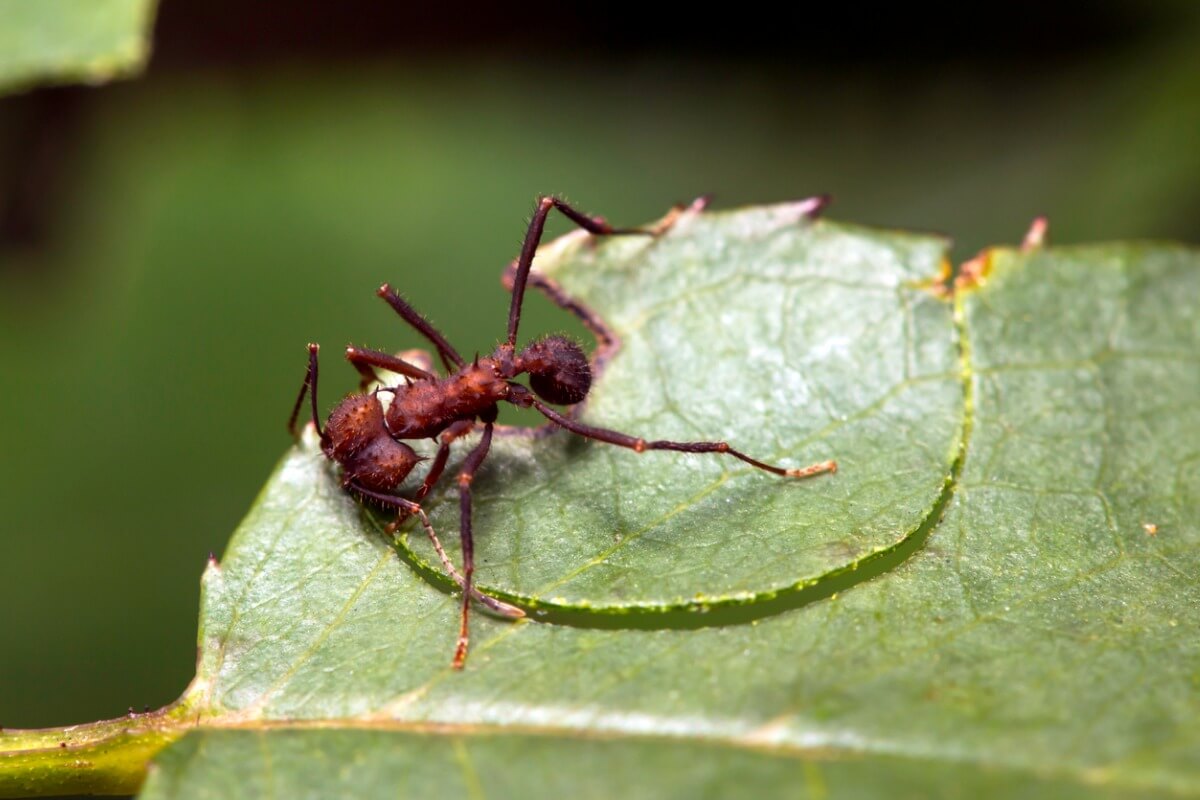Culona Ants: Habitat and Characteristics

When culona ants unite, they cease to be an individual entity and become a colony, known as a ‘superorganism’. They become a large family synchronized in their little minds, in order to work towards a common goal. When they come together, all other animals get out of the way.
Culona ant colonies are a powerful force that forages and moves like a single animal. They’re so connected that they behave as an autonomous being; a super organism, which comes together to perform specific tasks. This joint work has turned the culona ants into a real triumph of nature.
Why the name of culona ants
Its scientific name is Atta laevigatta, a species of hymenoptera of the formicidae family. It’s also one of the most common leafcutter ants. Its nickname of ‘culona ants’ is due to its physical appearance – a large, smooth, shiny head and a “backside” that’s also rather large.
In Colombia, this species is known as ‘culona ant‘. In any case, in other parts of the world – such as Argentina and Ecuador – it’s called ‘ zompopo de mayo‘ , in Venezuela ‘ akango‘ , in Paraguay ‘c hicatana‘ and in Mexico ‘ cepe culón‘.

Physical characteristics
Culona ants have the physical appearance of any terrestrial Hymenoptera, except for the rather large backside, which has a darker tone than other normal ants. The largest culona ant is the queen , which can measure 2.5 centimeters in length, while the workers are smaller, measuring 1.5 to 2 centimeters.
Apart from the queen, the rest of the members of the colony are excellent workers. This is how they can build a large anthill, with a depth in the ground of 5 meters, which extends up to 100 square meters in diameter. The entrance to this mini-city can be about 9 centimeters wide. Finally, these nests last for 50 years.
What do culona ants eat?
Culona ants feed on fungi that they cultivate themselves , which in turn come from a tissue of leaves that these ants chew on. With regard to this food, the following generalities can be cited:
- Culona ants grow these fungi in underground gardens, which can reach 36 centimeters wide and 1 meter deep.
- The cultivated fungi is the only food for the queen and her larvae.
- Cultivated mushrooms have a sponge-like appearance. They contain cells called ‘gongilidia’.
- The fungus remains in its pure state, without the ant needing to care for.
- The culona worker ants feed on the sap of the leaves, when these are cut into small pieces.
Habitat and behavior
The colonies that the culona ants build are underground mini-cities. In them, all the action and care of the young takes place. When workers do surface, they usually do so at night — and rarely during the day. They climb to the top of the trees and, with their jaws, cut the leaves in a curved way
The leaves they cut are proportional to their bodies. In this way, they carry them on their backs to take them to the colony . Beyond the activity in the anthill itself, this work contributes to the decomposition of 20% of the tree leaves. In addition , the queen takes a segment of the fungi made from these leaves for her nuptial flight.
Castes of the culona ant
The culona ants are divided into 2 castes: the first are the winged and fertile ants, which are the queens and the males. The second are workers or reproducers, in charge of shaping the underground nest and transporting the cut leaves.
When the diploid queen (with a full gene set) mates with a haploid male (half the genes) in the famous nuptial flight , she can start a new colony with her own worker ants. It’s important to note that the nuptial flight begins in the rainy season, usually when the rain ends.
Tactic of the culona ants
Culona ants have shown their loyalty to teamwork and synchronized communication. This is why these little hymenopterans are famous for developing a role -change strategy.
This behavior is a very special way of working, which begins with the task of cultivating fungi by young ants. When these ants mature and gain experience, they come to the surface and begin to cut leaves.
Enemies of culona ants
These strong building ants have enemies to watch out for and, in this particular case, the danger lies in 2 scenarios. First, when the queen goes out on her nuptial flight, she becomes the preferred food of bats and birds.
In addition, the ant hills of this species must face natural dangers, such as floods and human hands, especially when they are captured for the preparation of gastronomic dishes. Still, these clever little warriors manage to build new colonies, thus expanding the reign of the culona ants.

As you can see, ants show the highest degree of cooperation, encompassed in biological aggregations of a eusocial type. Each ant isn’t an individual entity, but just one part of a biological superorganism that moves together with a single purpose: to survive in time and expand the species.
All cited sources were thoroughly reviewed by our team to ensure their quality, reliability, currency, and validity. The bibliography of this article was considered reliable and of academic or scientific accuracy.
- Biografía – Atta laevigata, Wikipedia. Recogido a 12 de mayo en https://es.wikipedia.org/wiki/Atta_laevigata
- Biografía – Las hormigas culonas, Enjambre. Recogido a 12 de mayo en http://www.enjambre.gov.co/enjambre/file/download/185795
- Biografía – Hormiga culona, Deinsectos. Recogido a 12 de mayo en https://deinsectos.org/hormigas/hormiga-culona/
- Hernandez, J. V., Ramos, C., Borjas, M., & Jaffe, K. (1999). Growth of Atta laevigata (Hymenoptera: Formicidae) nests in pine plantations. Florida Entomologist, 97-103.
